Aswan City "Sono" ... Land of gold, tranquility and goodness
Aswan is one of the charming cities in southern Egypt, and I do not think that there is a city that enjoys this uniqueness in the world, as it is known for its rich history, unique geography, and amazing landmarks. Formerly known as the ancient city of Sono, sometimes called the Land of Gold, Aswan served as a treasure for its vital role in terms of strategic location, trade and culture in Egypt, and was once one of the largest trading centers of the ancient Egyptian Empire. Today, we will explore the heritage of Aswan and its unparalleled places by touring among its ancient monuments, picturesque landscapes and its people famous for their kindness and generosity.
Show key points
- Aswan, historically known as Sono, was a key southern border city and commercial hub in ancient Egypt, rich in trade and spiritual significance.
- The city’s unique geographic location causes a rare solar phenomenon during the summer solstice, which helped Eratosthenes estimate Earth's circumference over 2,200 years ago.
- Ancient writings from historians and religious texts frequently mention Aswan, highlighting its enduring cultural and historical importance.
- ADVERTISEMENT
- Aswan's climate is characterized by extreme heat and dryness, earning it recognition as one of the sunniest and driest places globally.
- Monumental landmarks such as Abu Simbel, Philae Temple, and Kom Ombo showcase the architectural brilliance and spiritual depth of ancient Egypt.
- The unfinished obelisk and granite quarries reflect the city's legacy in stoneworking and its role in supplying materials for historic structures across Egypt.
- Visitor attractions like the Nubian Museum, Island of Plants, and Kalabsha Temple enrich the cultural experience and celebrate the region’s heritage.
Sono... The old name of the city of Aswan
Recommend

Aswan, originally known as Sono which means "market" in ancient Egyptian, served as the southern border city of ancient Egypt, marking the beginning of the country at the Nile River. The name Sono is believed to derive from an Egyptian goddess associated with birth, which the Greeks later identified as Ilithia and the Romans as Lucena. Sono also represented the Egyptian symbol of trade or market, reflecting the city's importance as a major commercial hub. The city was located on the east bank of the Nile, north of the First Cataract, providing a natural border and a vital point of orientation for the Egyptians. Aswan's role as a commercial and spiritual gateway made it an essential part of ancient Egypt's civilization.
The strange geography of Aswan... Where shadows disappear
Scientists have observed since ancient times that during the summer solstice in Aswan, a vertically placed stick does not cast any shadow on the ground, and the sun's disk is reflected directly into a well. This phenomenon was the reason why the Greek scientist Eratosthenes was able to measure the angle of the tangent and prove the roundness of the Earth more than 2,200 years ago.
References to the city of Aswan in ancient writings
References in ancient writings refer to Aswan as a city frequently referred to by prominent figures such as Herodotus, Strabo, and Plinius the Elder. It also appears in ancient geographical works such as the Antony Path. The city is believed to be mentioned even in the biblical texts of Ezekiel and Isaiah, emphasizing its historical and cultural significance. Aswan's prominent position in these texts underscores its role in ancient literature and religious contexts.
Aswan Climate
Aswan has a hot, dry desert climate, with temperatures often exceeding 40°C during the summer months. Aswan is also one of the driest cities in the world, making rainfall a rare occurrence. Aswan also enjoys nearly 4,000 hours of annual sunshine, earning it a reputation as one of the sunniest places in the world.
Travel to Aswan
You can reach Aswan via the Cairo-Cape of Good Hope road that connects major cities such as Luxor, Cairo and Abu Simbel. The Red Sea ports can also be reached via the Aswan-Berenice highway and you can also reach Aswan by plane on a direct flight from Cairo or Alexandria. Access to Aswan is also available by taking the air-conditioned tourist train or luxury sleeping cars that make the 980km journey more comfortable and enjoyable.
Granite Quarries in Aswan
Aswan's history is closely linked to its stone quarries, which in ancient Egypt became famous for the production of precious granite rocks known as cyanite. These quarries provided the materials for the making of monumental statues, obelisks and monolithic shrines found throughout Egypt, including the famous pyramids. The legacy of these quarries, who have worked for more than 3,000 years, is still evident in today's original rocks. These quarries stretched across both banks of the Nile, with a road about 6.5 km carved into the landscape, connecting Aswan and Philae.
The most famous tourist attractions in Aswan
One of Egypt's most famous monuments, Abu Simbel Temple was built by Pharaoh Ramses II in the thirteenth century BC. This huge temple carved into the rock features huge statues of Ramses II and his queen Nefertari, showing the grandeur of ancient Egyptian art and architecture. The relocation of the temple in the sixties to avoid flooding from the Aswan High Dam is a testament to the ingenuity of modern engineering. As one of Aswan's most famous archaeological sites, it remains a symbol of Egypt's ancient glory. The alignment of the sun during certain times of the year reveals the evolution of its design, which continues to inspire awe and makes it a must-visit destination.
Edfu Temple
The Temple of Edfu, dedicated to the falcon god Horus, is one of the best preserved temples in Egypt, showcasing the splendor of the Ptolemaic period. Built on the Holy Land where the ancient Egyptians believed that the epic battle between Horus and Set, this temple stands as a powerful symbol of the victory of good over evil. The grandeur of its architecture, stunning inscriptions and detailed engravings make it an essential stop in any exploration of Aswan's history. As one of the last major temples built in ancient Egypt, it represents the enduring brilliance and honor of Egyptian civilization.
Kom Ombo Temple
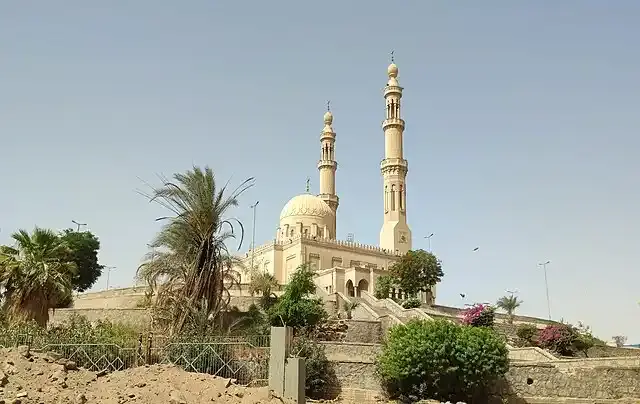
The Temple of Kom Ombo is one of the most prominent temples in Aswan, and perhaps the most unique in Egypt. Its name means "Gold Hill", reflecting its importance. The temple was built during the Greco-Roman era, from 205 to 180 BC, during the reign of King Ptolemy V, and the temple is located 45 km north of Aswan on the east bank of the Nile. What distinguishes Kom Ombo Temple is its double design, which makes it unique. The temple is divided into two identical parts dedicated to two gods: Sobek, the god of crocodile and fertility, in the southern half, and Horus the Great (Horeris), the god of the falcon, in the northern half. This unique structure symbolizes the Ptolemaic domination and sovereignty over Egypt. Visitors can admire the intricate sculptures and even explore exhibits displaying ancient medical instruments, adding to the rich historical experience.
Philae Temple
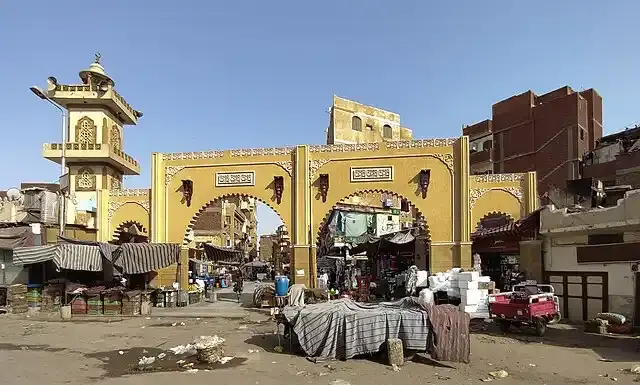
One of Egypt's most magnificent monuments, Philae Temple is known for its enchanting beauty and historical significance. Built between 380 and 362 BC by King Ptolemy II and other Ptolemaic rulers, it was dedicated to the goddess Isis, who symbolized motherhood, healing and childbirth. Located on a rocky island once a trading hub in the Nile River, south of Aswan, the temple has a rich history. In the sixties, he was transferred to the island of Agilquia as part of a UNESCO-led rescue mission, to protect him from flooding due to the construction of the Aswan High Dam. Today, the Philae Temple continues to dazzle visitors, especially during the sound and light show, which captures its stories in a spectacular show.
Aswan High Dam
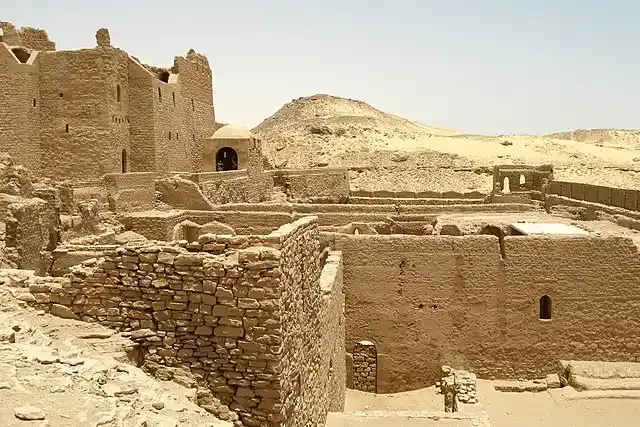
The Aswan High Dam is a tremendous achievement that marks Egypt's leap into the industrial age. Completed in 1970, this engineering dam successfully tamed the Nile, protecting Egypt from devastating floods and providing water and electricity to millions of people. Spread over an area of 3.8 kilometers, the dam created Lake Nasser, one of the largest artificial lakes in the world, transforming Egypt's agriculture and economy. The dam became a symbol of Egypt's revolution in 1952, ushering in a new era of progress and prosperity for the nation.
The missing obelisk
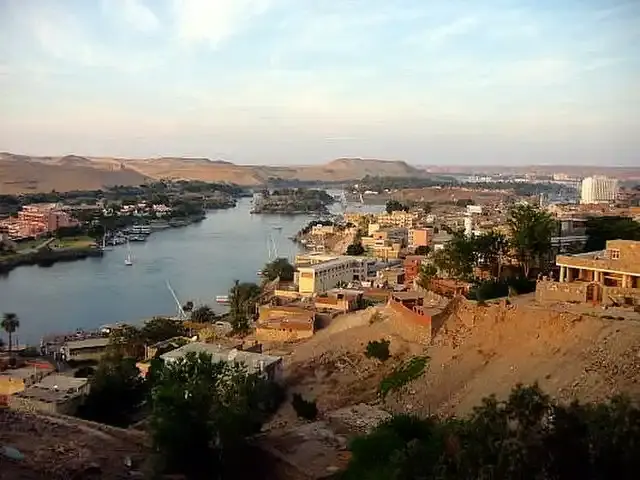
Among Aswan's majestic huge stones is the unfinished obelisk, which is living proof of the unparalleled greatness of ancient Egyptian civilization, and reveals their desire to create huge tales of stone. If this huge obelisk had been completed, it would have been the largest obelisk ever built. Unfortunately, a large crack in the stone led to her abandoned. The site provides a unique opportunity to understand how monumental structures were built during the New Egyptian Kingdom, especially during the reign of Hatshepsut. The unfinished obelisk provides invaluable insights into the ancient Egyptian construction process and stoneworking techniques.
Nubian Museum
The majestic Nubian Museum is located in Aswan, which was built to honor Nubian history and culture. Designed by Egyptian architect Mahmoud al-Hakim, it was built at a cost of $22 million, sponsored by UNESCO. The museum houses thousands of artifacts collected during the Nubia rescue mission after the construction of the Aswan High Dam in the sixties, raising water levels in Lake Nasser, putting many ancient Nubian monuments at risk. The museum offers an in-depth exploration of ancient Nubian civilizations through exhibits that include statues, jewelry, pottery and other artifacts, making it a major cultural attraction in the region. Discover this amazing cultural heritage by visiting the Nubian Museum with Sun Pyramids Tours, where you can immerse yourself in the rich and fascinating history of Nubia.
Island Plants
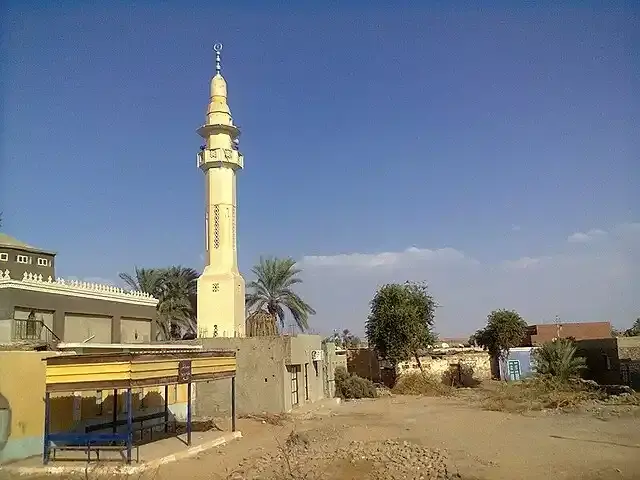
Home to many beautiful and brightly coloured plants, some of which date back hundreds of years, the island of plants is a green oasis in the heart of the Nile. This tranquil island features a variety of tropical plants, palm trees, and rare flowers from around the world, offering visitors a tranquil escape amidst Aswan's natural beauty. Less than a kilometer long and half a kilometer wide, the island is designed with 27 beautifully arranged squares, making it look like a natural chessboard. With three entrances, the island invites locals and tourists to explore its vibrant green spaces.
Kalabsha Temple
The Kalabsha Temple, originally located near the Aswan High Dam, was moved to the new island of Kalabsha to save it from flooding caused by the dam's construction. This Greco-Roman temple, dedicated to the Nubian sun god Mandolis, welcomes visitors with a stunning stone corridor that leads to its grand first tower. Inside, the temple reveals a colonnaded courtyard and an eight-poster hall, displaying magnificent hieroglyphs and detailed inscriptions. These sculptures offer insight into the influence of Greek pharaohs and ancient Egyptian gods.
In conclusion, we cannot convey to you the feelings and memories associated with visiting the city of Aswan with all its breathtaking experiences and places. But we can recommend that you visit this wonderful city in the winter, as it is truly one of the best winter destinations in the world.
![]()
How to deal with difficult people and people with a capricious mood?
How to deal with difficult people and people with a capricious mood? more- ADVERTISEMENT
![]()
Can companies avoid Kodak's future fate?
Can Companies Evade the "Kodak" Destiny in The Future? more- ADVERTISEMENT
![]()
Al-Ayjah Lighthouse and Castle in the city of Sur in the Sultanate of Oman
With its stunning coastal views and iconic Al-Ayjah Lighthouse, Tyre—also known as Sur—stands as one of Oman’s oldest and most captivating cities. Rich in maritime history, this ancient port once welcomed over 150 ships daily, bridging trade between continents and continuing to shine through its timeless heritage. more- ADVERTISEMENT
![]()
LI-FI: where the Internet travels at the speed of light
LI-FI, created in 2011 by Prof. Harald Haas in Scotland, uses light instead of radio waves for data transfer. It offers ultra-fast speed and strong security, making it ideal for sensitive environments. Despite its promise, challenges like high costs and dependency on constant lighting limit its widespread use. more- ADVERTISEMENT
![]()
Embracing stupidity: the hidden value of our mistakes
Embracing stupidity: the hidden value of our mistakes more- ADVERTISEMENT
![]()
First Steps to Investing: Practical Tips to Build Your Wealth
Starting your investment journey? Learn the basics, explore different asset types, and build a balanced plan tailored to your goals and risk tolerance. Stay patient, diversify wisely, and avoid common mistakes like investing with borrowed money. Smart moves now can shape a brighter financial future. more- ADVERTISEMENT
![]()
The strange long history of Teflon: the non-subversible product that nothing sticks to
The Long, Strange History of Teflon: The Indestructible Product Nothing Seems to Stick To more- ADVERTISEMENT
![]()
How to reduce risk and keep your business stable?
Effective risk management helps protect your business assets, improve decision-making, and avoid costly disruptions. By identifying, assessing, and addressing potential risks, you can ensure smoother operations and even uncover new opportunities. Regular updates, employee involvement, and proper tools can keep your risk strategy strong and your business steady. more- ADVERTISEMENT
![]()
Tips to reduce stress and focus during the day
Start your day with calm, healthy food, and quiet moments to reduce stress and boost focus. Short breaks, planning ahead, and winding down with hobbies or good sleep truly matter. These simple tips can refresh your energy and help you get through even the busiest days. more- ADVERTISEMENT
![]()
Cappadocia... The ancient city of caves and mountain chimneys in Turkey
Cappadocia, in central Turkey, is famed for its stunning landscapes, soft volcanic rocks, rock-cut churches, and underground cities. With a history dating back to the third millennium BC, its unique cave dwellings and ancient ruins attract tourists worldwide, especially to places like Goreme, now a UNESCO World Heritage Site. more- ADVERTISEMENT





















